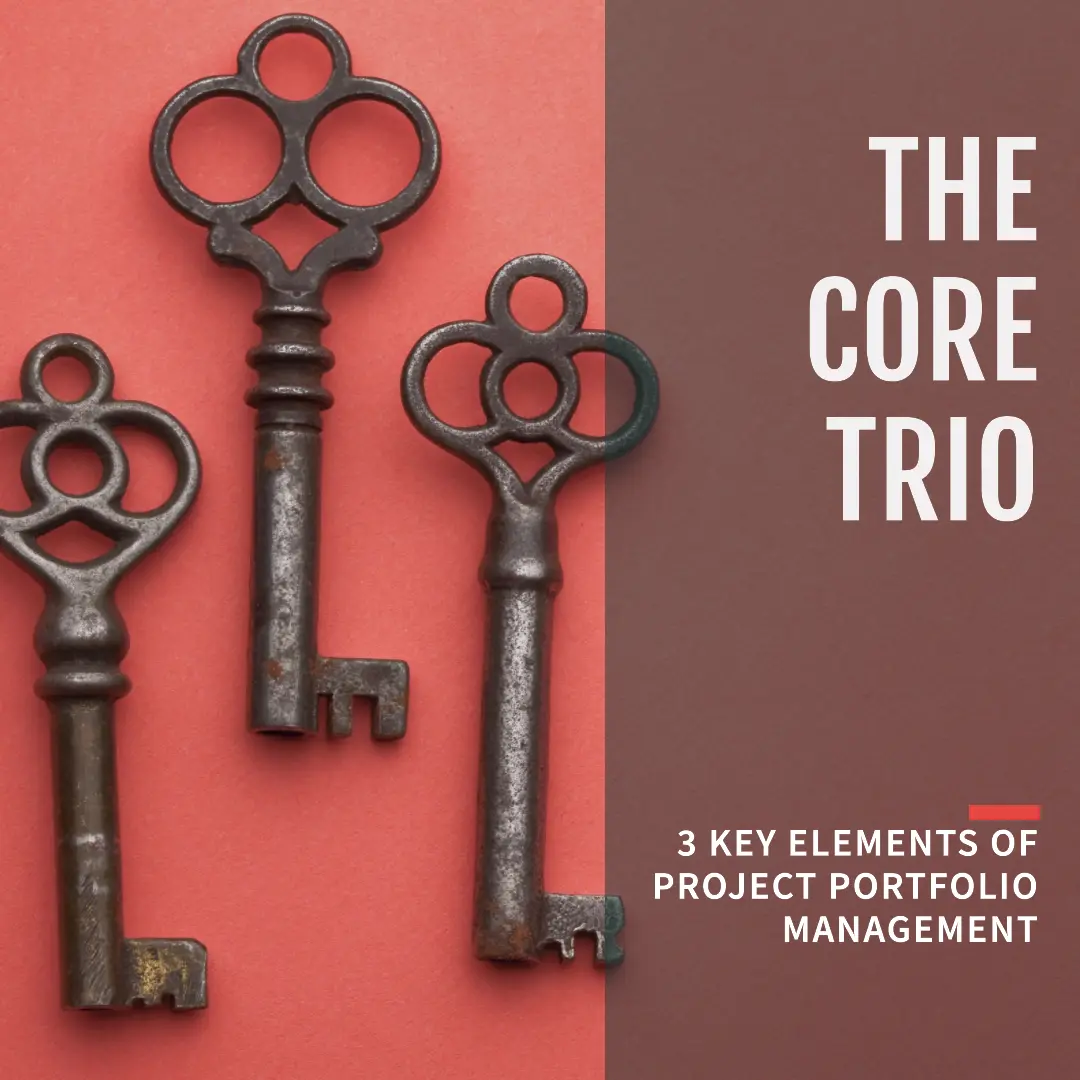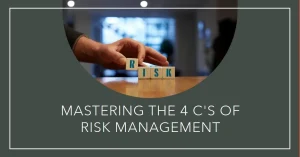To find out how Artificial Intelligence is changing the Project Management landscape, you may enjoy reading this article https://www.shaunstoltz.com/did-artificial-intelligence-just-change-everything-about-project-management/
I Introduction
Welcome to this in-depth exploration of Project Portfolio Management (PPM), a crucial discipline for organizations striving to execute projects that align with their overarching strategic objectives. Whether you’re an experienced project manager or a beginner stepping into the realm of portfolio management, this post will provide valuable insights and practical strategies to enhance your PPM effectiveness.
Project Portfolio Management is akin to steering a complex vessel. The captain, or in our context, the portfolio manager, must carefully coordinate the multiple moving parts to navigate towards the organization’s strategic goals successfully. It’s a dynamic, challenging role that requires a firm grasp of the key elements that underpin effective portfolio management.
This blog post will dissect the ‘Core Trio’ of PPM – the three pivotal elements that form the backbone of any successful portfolio management practice: Strategic Alignment, Resource Management, and Risk Management. Each of these components plays a vital role, and understanding their interconnectedness is fundamental to the overall success of your project portfolio.
But we won’t stop at just identifying and explaining these elements. We will also delve into practical strategies to master these areas, thereby optimizing your project portfolio’s performance. It’s a comprehensive guide designed to equip you with the tools to orchestrate your projects effectively and efficiently.
So, without further ado, let’s embark on this insightful journey into the heart of Project Portfolio Management. The knowledge and strategies you’ll gain from understanding the Core Trio could significantly enhance your project portfolio’s performance. Let’s dive in!
II Element 1: Strategic Alignment
The first key element in our ‘Core Trio’ of Project Portfolio Management is Strategic Alignment. But what exactly does that entail?
Strategic Alignment refers to the careful calibration of your project portfolio to align with the organization’s overarching business strategy. It’s about ensuring that every project you undertake contributes directly to your organization’s key objectives and mission. In essence, strategic alignment is the compass that guides your project portfolio, keeping it on course towards its strategic destination.
So, why is strategic alignment so crucial? Consider this scenario: you’re managing a portfolio of projects that are individually successful. They’re completed on time, within budget, and to a high standard. However, if these projects don’t align with your business strategy, they’re essentially rudderless ships – impressive on their own, but not contributing to the collective journey of your organization.
To illustrate this further, let’s take a look at a case study. Company A, a technology firm, has a strategic objective to become a leader in artificial intelligence (AI) within the next five years. To align their project portfolio with this strategy, they prioritize projects that advance their AI capabilities, including research and development projects, collaborations with AI-focused partners, and training programs to upskill their staff in AI technologies.
As you can see, strategic alignment isn’t about executing projects well – it’s about executing the right projects. It’s the essential first step in effective Project Portfolio Management, setting the stage for the other elements in our Core Trio.
So how can you ensure strategic alignment in your project portfolio? Here are a few strategies:
- Understand your organization’s strategy: Before you can align your projects with your business strategy, you need to understand that strategy inside out. What are your organization’s key objectives? What is your vision for the future?
- Evaluate projects based on strategic fit: Not all projects are created equal. When deciding which projects to include in your portfolio, consider how well they align with your strategy. Projects that contribute directly to your strategic objectives should be prioritized.
- Regularly review your project portfolio: Strategic alignment isn’t a one-time task. As your strategy evolves, your project portfolio should evolve with it. Regularly review your portfolio to ensure it remains in sync with your strategy.
Mastering strategic alignment can dramatically improve the effectiveness of your Project Portfolio Management, ensuring that every project contributes to your strategic journey. In the next section, we’ll delve into the second element of our Core Trio: Resource Management. Stay tuned!
III Element 2: Resource Management
Now that we have a compass in our hands with Strategic Alignment, it’s time to equip ourselves with another essential tool for our Project Portfolio Management journey: Resource Management.
Resource Management, in the context of PPM, is the efficient and effective deployment of an organization’s resources when and where they are needed. These resources can include human resources (your project teams), financial resources (your budgets), and physical resources (tools, workspace, equipment). It’s about making sure the right resources are in the right place at the right time.
So why is Resource Management so important? Imagine you’re planning a road trip. You’ve got your route all planned out (that’s your strategic alignment), but you forget to fill up the gas tank. Without fuel, your journey comes to a halt, no matter how well you’ve planned your route. In the same way, projects need resources to move forward. Mismanaged resources can lead to projects stalling, budgets blowing out, and, ultimately, strategic objectives not being met.
Let’s look at an example. Company B, a construction firm, has a portfolio of five building projects. They have a pool of skilled workers, a fleet of equipment, and a budget for each project. By effectively managing these resources – scheduling workers where they’re needed most, allocating equipment efficiently, and keeping a close eye on the budget – they ensure each project has what it needs to progress smoothly.
It’s clear, then, that Resource Management is a vital cog in the PPM machine. But how can you optimize Resource Management within your project portfolio? Here are some strategies:
- Implement a resource management tool: There are many software tools available that can help you track and manage your resources effectively. These tools can provide real-time visibility into your resource allocation, helping you identify and resolve any issues promptly.
- Communicate and collaborate: Effective Resource Management is a team effort. Regular communication with your project teams can help you stay on top of resource allocation, anticipate future resource needs, and resolve any conflicts or shortages early.
- Plan for contingencies: No matter how well you plan, unexpected events can throw a spanner in the works. Having a contingency plan in place can help you navigate these challenges without derailing your projects.
By mastering Resource Management, you can ensure that your projects have the fuel they need to reach their strategic destinations. But there’s one more element in our Core Trio that we need to explore: Risk Management. Keep reading to discover why this element is crucial for successful Project Portfolio Management.
IV Element 3: Risk Management
We’ve set our compass with Strategic Alignment, and filled our tank with Resource Management. Now, it’s time to navigate the potential roadblocks on our Project Portfolio Management journey with our third key element: Risk Management.
Risk Management involves the identification, assessment, and prioritization of risks, followed by coordinated and economical application of resources to minimize, monitor, and control the probability or impact of unfortunate events. In simpler terms, it’s about foreseeing potential issues that could derail your projects and having a game plan to tackle them.
The significance of Risk Management can’t be overstated. Just as a sudden storm can ruin an otherwise well-planned road trip, unexpected risks can throw your projects off course. These risks can come in various forms, from budget overruns and scheduling delays to technical issues and changes in market conditions.
To illustrate the importance of Risk Management, let’s consider a case study. Company C, a software development firm, is managing a portfolio of projects developing new apps. They conduct regular risk assessments, identifying potential risks like technical bugs, security issues, and delays in development. By identifying these risks early, they’re able to develop mitigation strategies, such as allocating additional testing resources or building in extra time for development.
So, how can you bolster your Risk Management practices within your project portfolio? Here are some strategies:
- Conduct regular risk assessments: Regularly review your projects to identify potential risks. This should involve all stakeholders, as different people may have different perspectives on potential risks.
- Develop a risk response plan: For each risk identified, develop a response plan. This could involve mitigating the risk, transferring it, avoiding it, or accepting it.
- Monitor and review risks: Risk Management is an ongoing process. Keep a close eye on your identified risks and be ready to adjust your response plan as necessary.
By mastering Risk Management, you can prepare your project portfolio for potential roadblocks and ensure that, even when the unexpected happens, you’re ready to steer your projects towards their strategic objectives.
Now that we’ve explored the ‘Core Trio’ of Project Portfolio Management, let’s discuss how these elements work together to ensure successful portfolio management. Continue reading to learn more about the synergies among Strategic Alignment, Resource Management, and Risk Management.
V How These Elements Work Together
We’ve delved into the ‘Core Trio’ of Project Portfolio Management – Strategic Alignment, Resource Management, and Risk Management. While each of these elements is crucial in its own right, their true power lies in their synergy. Like a well-oiled machine, each component interacts and collaborates with the others, driving the gears of effective Project Portfolio Management.
Consider Strategic Alignment as the blueprint, outlining the ‘what’ and ‘why’ of your project portfolio. It gives your projects direction and purpose, ensuring they contribute to your organization’s strategic objectives. But a blueprint alone isn’t enough to build a structure. You need resources – people, equipment, and materials – to bring your blueprint to life. That’s where Resource Management comes in, ensuring you have the right resources in the right place at the right time.
However, just as any construction project faces potential hurdles – from bad weather to supply chain issues – so too do your projects. Risk Management is your safety net, helping you anticipate potential problems and develop plans to navigate them. It allows you to protect your resources and keep your projects aligned with your strategy, even when the unexpected happens.
These elements are interdependent and mutually reinforcing. Effective Resource Management and Risk Management support Strategic Alignment by ensuring your projects have the resources they need to meet their strategic objectives and are prepared to navigate any potential roadblocks. Similarly, a clear strategic alignment guides Resource Management and Risk Management by providing a clear vision for what resources are needed and what risks are most critical.
Let’s consider an example. Company D, a healthcare organization, is managing a portfolio of projects to develop new patient services. They’ve strategically aligned their projects with their goal of improving patient care. They’ve allocated their resources effectively, ensuring each project has the necessary staff, equipment, and budget. And they’ve identified and planned for potential risks, like regulatory changes or technical issues. Because they’ve mastered the ‘Core Trio’, they’re able to navigate challenges and keep their projects on track towards their strategic goal.
Understanding the interplay between these elements is crucial for successful Project Portfolio Management. In the next section, we’ll share some strategies for mastering the ‘Core Trio’ and achieving optimal results in your project portfolio. Don’t miss it!
VI Mastering the Core Trio: Strategies for Success
Understanding the ‘Core Trio’ of Project Portfolio Management – Strategic Alignment, Resource Management, and Risk Management – is one thing, but mastering these elements in practice is another. It requires careful planning, regular review, and a willingness to adapt and improve.
In this section, we will share some strategies that can help you hone your skills in these areas and enhance the performance of your project portfolio. Let’s delve in:
- Strategic Alignment: To excel in strategic alignment, it’s essential to establish a clear, well-communicated strategy that serves as a guiding beacon for all your projects. Make sure all stakeholders understand this strategy and how their projects contribute to it. Regularly review your project portfolio to ensure ongoing alignment, and be ready to pivot as your strategy evolves.
- Resource Management: Effective resource management hinges on visibility and planning. Implement a robust resource management system that gives you real-time insights into resource allocation and availability. Plan your resources carefully, but be flexible – be ready to reallocate resources as priorities shift. Remember, communication is key – ensure project teams understand their roles and resource utilization.
- Risk Management: A proactive approach is best when it comes to risk management. Regularly conduct risk assessments and involve stakeholders in this process – different perspectives can help identify a broader range of potential risks. For each identified risk, develop a response strategy, and keep a close eye on these risks, ready to adjust your plan as necessary.
- Continuous Improvement: The ‘Core Trio’ is not a set-and-forget strategy. Effective Project Portfolio Management involves ongoing review and improvement. Regularly assess your performance in strategic alignment, resource management, and risk management, and look for opportunities to improve. Seek feedback from stakeholders, learn from your successes and failures, and continuously refine your approach.
By applying these strategies, you can not only understand but master the ‘Core Trio’, optimizing the performance of your project portfolio and steering your projects towards their strategic objectives. Remember, Project Portfolio Management is not a static discipline – it’s a dynamic, evolving practice that requires adaptability, foresight, and strategic thinking.
We hope this exploration of the ‘Core Trio’ of Project Portfolio Management has provided valuable insights and practical strategies to enhance your PPM practice. Remember, the journey to mastery is ongoing – keep learning, keep improving, and keep driving your projects towards success.
VI Conclusion: The Power of the Core Trio in Project Portfolio Management
As we come to the close of our exploration of the ‘Core Trio’ of Project Portfolio Management – Strategic Alignment, Resource Management, and Risk Management – it’s essential to reflect on the transformative impact these elements can have on your organization’s project portfolio.
When effectively managed, these elements can serve as the engine that drives your projects towards their strategic objectives, ensuring optimal use of resources and preparedness for potential risks. It’s not just about managing projects – it’s about managing them in a way that delivers maximum value for your organization.
Mastering the ‘Core Trio’ is not an overnight process. It requires commitment, foresight, and a willingness to continuously learn and improve. The journey may be challenging, but the rewards – in terms of improved project outcomes, enhanced strategic alignment, and greater organizational efficiency – make it well worth the effort.
As you embark on your journey to master the ‘Core Trio’, remember that Project Portfolio Management is not a static discipline. It’s a dynamic, evolving field that requires adaptability and strategic thinking. Embrace the journey, learn from your experiences, and continuously strive to improve.
In conclusion, the ‘Core Trio’ of Project Portfolio Management – Strategic Alignment, Resource Management, and Risk Management – is a powerful tool for driving project success. By understanding and mastering these elements, you can steer your project portfolio towards its strategic objectives, maximize the use of your resources, and be prepared to navigate any risks that come your way.
Thank you for joining us in this exploration of the ‘Core Trio’. We hope this blog post has provided you with valuable insights and practical strategies to enhance your Project Portfolio Management practice. Here’s to your success in your PPM journey!
Find out more about Shaun Stoltz https://www.shaunstoltz.com/about/
This post was written by an AI and reviewed/edited by a human.



